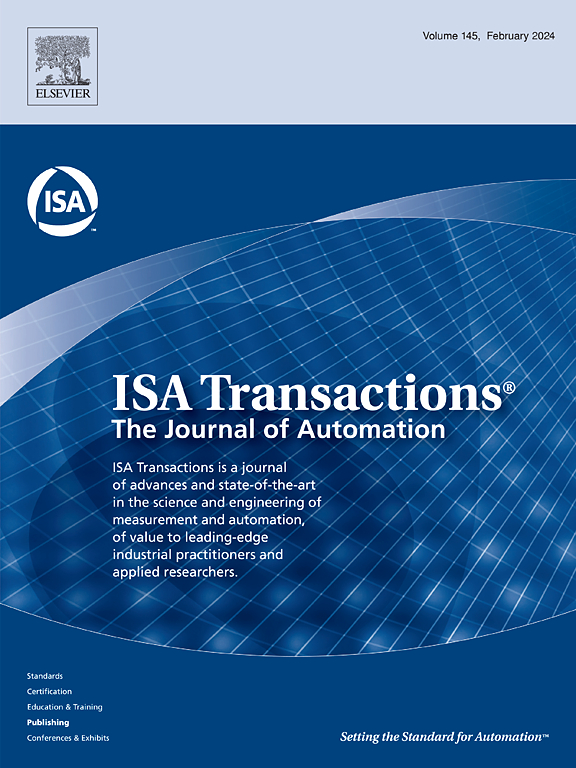Frequency handling by reinforcement of predictive 2DoF-MPC and state observer LADRC for smart power system
IF 6.5
2区 计算机科学
Q1 AUTOMATION & CONTROL SYSTEMS
引用次数: 0
Abstract
The preservation of stability is essential for the efficient and reliable functioning of the electrical transmission system. Frequency oscillations are prevalent in interconnected power systems (IPS) and may lead to instability; therefore, it is crucial to monitor and examine them meticulously. Effective frequency management is essential for regulating frequency output in an interconnected smart power system (ISPS) that includes renewable energy sources (RESs), redox flow batteries (RFBs) and static synchronous series compensators (SSSCs). In view of the challenge presented, this research introduces an efficient control architecture that utilizes a 2 degree of freedom-based model predictive controller (2DoF-MPC) to enhance system performance. Additionally, it integrates a linear active disturbance rejection control (LADRC) to employ a state observer alongside the evolving frequency management. The convergence of the predictive and state observer frameworks results in a robust 2DoF-MPC-LADRC to manage frequency disturbances and uncertainties in the power system. The suggested technique is thoroughly validated across several parameters for ISPS, instilling confidence in its capacity to attain minimal frequency variation in multiple scenarios. The performance of the proposed controller design shows that the frequency performance in area 1 and area 2 settles in 5.085 sec and 3.965 sec, when the load changes by 3 %, and it settles in 4.655 sec and 4.050 sec, respectively, when the load changes by 5 %.
基于预测2DoF-MPC和状态观测器LADRC的智能电力系统频率处理。
保持稳定是电力传输系统高效可靠运行的必要条件。频率振荡在互联电力系统(IPS)中普遍存在,并可能导致不稳定;因此,对它们进行细致的监测和检查至关重要。在包括可再生能源(RESs)、氧化还原液流电池(rfb)和静态同步串联补偿器(SSSCs)在内的互联智能电力系统(ISPS)中,有效的频率管理对于调节频率输出至关重要。鉴于所提出的挑战,本研究引入了一种高效的控制体系结构,该体系结构利用基于2自由度的模型预测控制器(2DoF-MPC)来提高系统性能。此外,它还集成了线性自抗扰控制(LADRC),采用状态观测器和不断变化的频率管理。预测和状态观测器框架的收敛性导致了一个鲁棒的2DoF-MPC-LADRC来管理电力系统中的频率干扰和不确定性。所建议的技术在isp的几个参数中得到了彻底的验证,使人们对其在多种情况下实现最小频率变化的能力充满信心。所设计控制器的性能表明,当负载变化3 %时,区域1和区域2的频率性能分别稳定在5.085 sec和3.965 sec;当负载变化5 %时,区域1和区域2的频率性能分别稳定在4.655 sec和4.050 sec。
本文章由计算机程序翻译,如有差异,请以英文原文为准。
求助全文
约1分钟内获得全文
求助全文
来源期刊

ISA transactions
工程技术-工程:综合
CiteScore
11.70
自引率
12.30%
发文量
824
审稿时长
4.4 months
期刊介绍:
ISA Transactions serves as a platform for showcasing advancements in measurement and automation, catering to both industrial practitioners and applied researchers. It covers a wide array of topics within measurement, including sensors, signal processing, data analysis, and fault detection, supported by techniques such as artificial intelligence and communication systems. Automation topics encompass control strategies, modelling, system reliability, and maintenance, alongside optimization and human-machine interaction. The journal targets research and development professionals in control systems, process instrumentation, and automation from academia and industry.
 求助内容:
求助内容: 应助结果提醒方式:
应助结果提醒方式:


